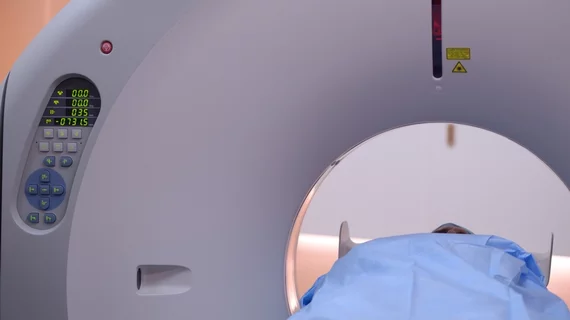Radiologists must “urgently" consider their role in climate change and mitigate imaging’s harmful environmental impact, experts urged in a call to action published Thursday
U.S. healthcare is responsible for 9.8% of America’s greenhouse gas emissions and radiology departments are “likely” a major contributor to energy consumption, imaging providers wrote in JACR. And now is the time for radiologists to take action.
“Our field has made great strides in patient safety by decreasing radiation doses,” a trio of radiologists that includes American College of Radiology President Geraldine McGinty, MD, MBA, wrote in the March 11 piece. “Similarly, through our technological expertise and awareness, we can decrease our carbon footprint, with the ultimate goal of mitigating climate change and preventing a looming public health crisis.”
Below are four key areas to address.
1. Imaging’s combined energy use is substantial, the authors noted, with the power required for one MRI scanner comparable to that used by 26 four-person households over the course of a year. Ultrasound, meanwhile, requires less energy, costs and radiation, and may be a better choice, when appropriate. AI-driven short MRI protocols and life-cycle analyses can help offset this environmental impact, they explained.
2. Modalities running in standby mode also require large amounts of energy, and cooling down these machines is just as inefficient as running them. McGinty et al. said a 24-hour operating model could reduce carbon emissions per each exam. Improving imaging techniques, heating, ventilation, and air conditioning systems will also help.
3. Wasteful habits like leaving PACS stations on overnight are common and add up. One Irish rad department found doing so required the same amount of energy and carbon dioxide output as four cars per year. Powering down workstations and also reducing excess packaging in procedures are easy, yet impactful fixes.
4. Renewable energy prices have quickly declined, making clean energy a practical choice to power health systems, the authors wrote. They pointed to Kaiser Permanente’s transition to carbon neutrality and Gundersen Health System’s net carbon positive achievement as proof.
The authors called for radiology representation on the influential Medical Society Consortium on Climate and Health, which consists of 29 national medical societies, including the American Medical Association. Advocating for local ACR chapters to join the national conversation is also worthwhile, they added.
“Radiology faces many challenges, from improving diversity to changes in reimbursement in a budget-neutral system,” McGinty, a radiologist at Weill Cornell Medicine, and co-authors concluded. “Addressing climate change is an opportunity to protect vulnerable populations and increase our value in the healthcare system.”

